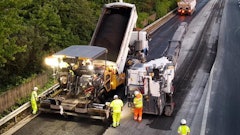
Okay, I will admit I’m not the savviest person in terms of being environmentally friendly. There’s a lot I just don’t know or don’t understand.
For example:
- I do know that United Airlines tells me how many tons of CO2 my flight generates (whatever that means). To quote a recent flight search, “A flight's carbon footprint is measured in kg CO2e (kilograms of carbon dioxide equivalent). We've estimated this flight to produce about 511 kg CO2e per economy seat of carbon emissions.”
So, am I a bad person for flying?
- I also know UPS wants to charge me an optional “carbon offset fee” if I so choose.
Does this mean a tree is planted in my name? Will my replacement striper part arrive faster?
- I know Apple just announced the new iPhone 15 and announced they are not selling leather cases due to their carbon footprint, nor will they be selling leather wristbands for the Apple Watch.
What is going on? Is my “environmental footprint” bigger than I thought? What size do I even wear?
Joking aside, I understand I am a bit ignorant when it comes to this stuff. I know construction and asphalt, but this is new to me and to many of us.
So how do we deal with this? How can we handle and get a grasp of the environmental impact of what happens in our everyday lives – and in our business? Does it have to be a struggle? Without sparking debate on which type or brand of sealer is better or which paint is better, I just simply want to point out how the environmental impact of things we do every day is affecting us now -- and what we can do.
Some pavement sealers have been “banned” by states or local municipalities. That’s an entirely different debate, but if you find yourself in a market considering a ban, what should you do? Traffic paint along with sealers and other materials emit what’s called VOCs -- volatile organic compounds -- that are emitted into the air from products or processes. Low-VOC paints are now required in many areas. What can you do?
Some suggestions:
- If you learn of possible regulations in your market, be proactive and reach out to educate your local and state representatives.
- Contact your suppliers and ask them to support your efforts. Often they will provide educational literature and send representatives to local meetings.
- Reach out to industry organizations to gain their support.
- Engage with local media, giving them insight into your business, your contributions to the local economy, and the impact regulations would have on your business.
You might be able to prevent or ease regulations – or you might not. In my county, traffic paints became regulated several years back so only low-VOC formula paints are permitted. This was a huge change because suddenly our choice of products and suppliers was cut significantly. What should we have done? What should you do if (when?) it happens in your market?
Fortunately, you don’t have to fight the fight. Once laws or regulations are passed in your area, you just need to comply. Of course, compliance doesn't become an option if your sealer or paint of choice is pulled from the shelf -- as can happen in record time. But too often some of us continue to fight or try to slide by using prohibited materials.
The best advice I can give as someone who has experienced this – and this is probably the most-important takeaway here -- is to prepare early by exploring compliant products. Don't wait until you are forced. (I will add that the low-VOC traffic paint that we now use is some of the best we have ever used in more than 26 years….so not all change is bad.)
I have heard from others that have had to switch sealer that some switches have worked out well and some, not so much. But the time to find out which brands or types of more “environmentally friendly” sealers you prefer is before you are required to use them. And who knows? In the process you might just find a product that performs better than expected!
So, talk with your suppliers, explore options, try new things, make a plan for your business – and do this before you don’t have a choice. By planning you will be prepared and much better equipped to handle change if and when it happens, and as in my case with traffic paint, it might just work out better for you.
Regulatory changes are the future, and as an owner, planning and preparation is your best option – and your responsibility.
By the way, I am still trying to determine my environmental foot size…to be continued when I figure that part out!






























